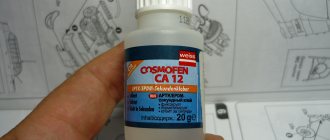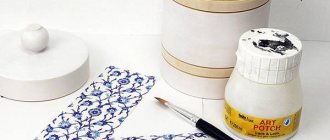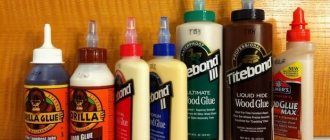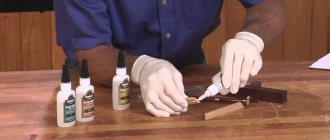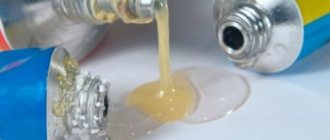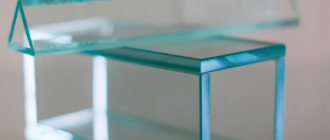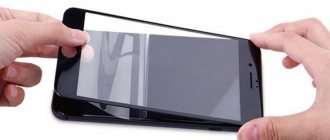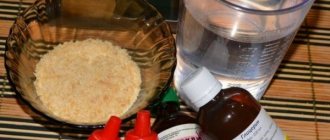We present to your attention one of the most widely used household compounds - silicate glue. It is also called stationery glue or liquid glass. The range of its applications begins with office work and ends with construction. What the adhesive is made of, its positive and negative properties, methods of application and precautions - all this is briefly described in the article.
Compound
The concept of “silicate glue” includes the name of substances with approximately the same qualities, but different compositions. Let's look at what silicate glue is in general.
The glue looks like a transparent, greenish or brownish gel, the obligatory substance in which is silicic acid salts.
Additionally, the composition includes oxides of alkali metals - either sodium, or potassium, or lithium. Therefore, there are three main types of glue: sodium, potassium and lithium. Each of them creates an adhesive mass that has similar, but inherent properties to each individually.
At home, at school and in the office, the name for this mass is stationery or office glue. In industry - silicate glue liquid glass.
The adhesive properties of liquid glass are directly proportional to the silicate module - the ratio of the amount of silicon raw materials to the amount of the alkaline component. The range of values of the silicate module is 2.0 – 4.0.
The chemical formula of liquid glass is Na2O+SiO2.
Main characteristics of office glue
Solutions of this liquid compound include various high-dimensional forms, the simplest orthosilicates from the category of monomers. The key characteristics of this composition are the following.
Polymerization
The level of polymerization of silicate glue does not have a constant value; it constantly changes under the influence of fluctuations in the ratio of silicic acid and alkali. In addition, this indicator depends on the concentration characterizing the main substance.
Viscose
This is the most important indicator of the quality of liquid glass. This value decreases with increasing temperature, precisely at the level at which the material is manufactured. As the concentration of the solution increases, its viscosity increases. The value of this quantity is determined using a special device - a viscometer.
Important! It can also increase if you add highly soluble salt to the glass.
This indicator is measured with an ordinary aerometer. It indicates the real density of the composition as reliably as possible, even if too little glue is submitted for analysis. This value is measured with fluctuations, even the most insignificant, in the ratio of the silicic acid and alkaline components of the glass.
Cooking point
The astringent properties of the glue directly depend on it, that is, the liquefaction temperature, varying from 760 to 870 degrees.
pH value
It is impossible to significantly change this indicator. If you add 10-100 parts of water to the composition, the pH level will change by no more than one unit, that is, it will become equal to 10-12. The glue hardens at temperatures from minus 2 to plus 10 degrees. It returns to its original state when diluted, but its properties remain unchanged.
Important! Stationery glue (liquid glass) should not be stored at subzero temperatures, otherwise crystals may form on its surface. Even after heating they do not disappear.
Production technologies
In the industrial production of liquid glass, two types of technological solutions are used - dry and wet.
Dry technology
Three methods are used to obtain the finished product, depending on the main raw material: sand, silicon raw materials or cullet.
Sand based. When technical soda is added to sand, sodium is obtained, and with potash, potassium liquid glass is obtained. The content of the process is that at a temperature of about 1300 °C the mixture is baked, which, when cooled, turns into stone-like blocks of silicate.
Sodium silicate after cooling (dry technology)
What the cooled sodium mixture looks like after baking can be seen in photo 1.
Subsequently, the lumps are ground into powder and packed in paper bags.
Another option is to dissolve the crushed blocks in hot water under pressure to obtain a liquid suspension. Liquid glass is poured into plastic cans or metal barrels.
Based on silicon raw materials. The raw materials are crushed, an alkaline element (oxides of sodium, or potassium, or lithium) is added to it. The resulting mixture is mixed in a stationary or rotating autoclave at a temperature of about 1000 °C under a pressure of 3–4 atmospheres until silicate blocks are obtained. Lumps are the main material for obtaining powder or finished liquid glass.
Based on cullet. The raw materials are crushed, cleaned of impurities, an alkaline ingredient is added and the mixture is melted. After cooling, the melt takes the form of a silicate block, from which powder, granules or aqueous dispersion are obtained. From powder and granules, liquid glass can be produced on site.
Wet technology
The advantage of this type of technology is the direct production of liquid glass without first creating a silicate block.
The essence of the technology is the dissolution of raw materials containing silicon with solutions of alkaline substances. The raw materials include natural silica, most often infusorite or diatomite, in the amorphous state - in the form of powder. A concentrated alkaline solution of sodium, potassium or lithium is added to the silica, which accelerates the dissolution reaction.
The time required to obtain liquid glass depends on the size of the powder grains, temperature and pressure during dissolution. With a specific gravity of an alkaline solution of 1.2 under a pressure of three atmospheres at a temperature of about 100 °C, liquid glass from infusorite was obtained in three hours with a silicate modulus of about 3.0.
Features of application: how to apply liquid glass
Before applying the product, the surface must be thoroughly cleaned of any contaminants that may reduce absorbency. Surfaces treated with silicate solution must dry for at least 24 hours. According to the instructions for use, liquid glass is applied in several layers, with sufficient time allowed for each layer to dry. The surface is treated with a product similar to thick paint - using a brush or roller. If it is necessary to create a protective coating, the material is applied with a plaster spatula.
All work must be performed sequentially, in accordance with the instructions. You can use liquid glass yourself, saving on fees for the services of specialists. First, the surface must be thoroughly cleaned of stains, debris, dirt, and old coating. Next, apply the first layer of the product with a roller. After it has dried, the surface is covered with a second layer.
Liquid glass must be added to the concrete solution immediately before work
If it is intended to use a concrete solution with the addition of sodium silicate, then it is prepared immediately before use, since the mixture hardens quickly. You need to apply it within 20 minutes. Strict adherence to proportions is important. The slightest mistake can cause the surface to crack and collapse.
While working, you must wear special clothing and use personal protective equipment. Upon completion of the process, you must thoroughly wash your hands and tools before the remaining material dries.
Areas of use
Of the total amount of liquid glass produced in Russia, 90% is sodium glass, 8% is potassium liquid glass.
At home
Stationery or office glue is used for gluing paper, gluing it to non-porous surfaces. Also used for repairing glass and porcelain products. Seals fresh cuts, preventing the development of tree damage.
Washing powders, soap, dishwashing detergents - all this is produced using sodium liquid glass.
Paints used in everyday life for outdoor work to protect highly heated surfaces are based on the potassium version. The same glue is used when processing wooden and other surfaces to create a protective film. The film does not crack, can withstand heating and cooling, and precipitation.
The procedure for treating a car body with silicate glue is shown in the video.
In construction
Sodium liquid glass is most widely used in the construction industry. Its price is three times less than the price of other types.
Processing with liquid glass gives the foundation of a future home increased strength.
High adhesion and penetrating ability are used when sealing cracks in the foundation, while the foundation becomes monolithic. Such work is clearly shown in the video.
The substance is used to add to cement when constructing the walls of furnaces, ensuring their fire resistance. When silicate glue is added to cement or concrete, their strength properties and resistance to weathering are significantly increased.
Using liquid glass, primer solutions, impregnations for ceilings and walls, antiseptics, waterproofing and fire-resistant mixtures are prepared directly at the construction or repair site.
Other areas
In accordance with GOST 13078-81, liquid sodium glass is used in the paper industry to create cardboard containers. In the textile industry, impregnation of materials with this substance makes it possible to create non-flammable protective clothing.
In the foundry industry, silicate glue is used to make molds and cores for one-time castings. An example of how to make a mold for casting at home is given in the video.
Electrodes used in welding are made using potassium liquid glass
When mining ore, separating oil and water, and cleaning sewage, silicate adhesive has good adhesion to any material. In these cases, liquid glass is used as a flotation reagent.
The modern area of application of silicate glue has become space.
Lithium liquid glass is used to create temperature-controlled surfaces of spacecraft.
The use of “miracle glue” in modern construction
The main consumers of the described material are considered to be enterprises in the construction industry. The use of liquid glass in concrete is widespread. Silicate glue is characterized by a relatively low cost. And at the same time, it significantly improves the performance properties of the concrete solution, guaranteeing the latter excellent waterproofing. In addition, liquid glass has high antibacterial capabilities.
Due to this, mold never appears on the concrete into which it is added, and fungus does not appear. All pools these days, as well as structures operating at constantly high humidity, are concreted with compounds containing the “miracle glue” we are considering.
It is worth taking into account that liquid glass hardens quite quickly. And in some cases it cannot be mixed with concrete before starting work.
The builders found a way out of this situation.
They use a “cunning” method, which involves treating an already erected concrete structure with a solution of water and liquid glass (the components of this mixture are taken in equal quantities). Silicate solutions are well suited for combating soil subsidence under erected buildings and structures. In this case, it is recommended to use liquid glass, the use of which does not require any large-scale work.
Surface treatment with liquid glass
When combating subsidence, silicate glue is pumped into the ground under construction according to one of two schemes:
- One-step method - a mixture of a special hardener and liquid glass is formed, which is supplied under the building.
- Sequential technique - glass is pumped in first, then the hardening compound.
Impregnation of plaster and wood with liquid silicate solutions is common (we will discuss this below). Silicate glue is also added to zinc silicate paint, which protects metal products from corrosion for 25–30 years! Liquid glass is also included in modern particle boards. Their impregnation with “miracle glue” makes any wood products durable and very resistant to compression.
Advantages of silicate glue
The use of glue in the listed areas is due to its positive qualities. These include:
- Cheapness of the starting components for the production of liquid form.
- Easy to store at low temperatures - does not lose its properties after freezing and thawing.
- High degree of adhesion to almost any materials, determined by the value of the silicate module.
- The ability to form a durable waterproofing film with a service life of up to five years. The film protects against acids and overheating. She herself is not flammable.
- When dry, an insoluble adhesive layer appears, which has antiseptic and antistatic properties.
- When drying, there are no deformation shifts, which preserves the shape and strength of the glued materials.
| Type of glue | PVA | Liquid glass |
| Origin | Obtained artificially | Contains minerals |
| Appearance | The color is white and the consistency is creamy | Translucent, has a slight yellowish tint, the consistency is more liquid |
| Impact on paper sheet | Glues thin sheets and photographic paper. Does not turn yellow | May turn yellow over time |
| Bonding ability | Can glue lightweight parts made of glass, plastic, wood, fabric | Glues paper, cardboard |
Flaws
In addition to a large number of advantages, glue also has disadvantages, which take into account
When planning use, the disadvantages of liquid glass are also taken into account. Some of them are related to the advantages of the adhesive mass:
- The adhesive is not suitable for processing porous materials such as brick. Due to its high penetration, the suspension fills all pores and, when dry, breaks the brick from the inside. This limits the use of the suspension in construction.
- Short working time with solutions that contain silicate glue - rapid hardening requires the skills and experience of builders.
- For waterproofing, other components are needed, to which the material is used as an addition.
Manufacturers
A wide range of silicate glue from different manufacturers allows you to choose the most convenient option for use. The composition of all adhesives is approximately the same. The main differences relate to packaging and price. Some manufacturers add flavorings to the solution.
- Officemag. A silicate solution from the same manufacturer, has a yellowish tint, and is intended for working with paper and cardboard. Has a liquid structure. Available in a 110 g tube. with an applicator, which allows you to use material economically. Price from 12 rub.
- inFORMAT has a high adhesive ability, is colorless and odorless. Suitable for fixing and processing cellulose substrates. Available in a transparent, soft bottle with a 75 g dispenser. Package price from 11 rub.
- ERICH KRAUSE – high-quality office glue for working with paper, fabric, cardboard. It has a transparent, homogeneous, odorless consistency. The bottle has a plastic tip with a cap for uniform application of the composition. Available in 50 ml packaging, costs from 40 rubles.
- BRAUBERG – German composition. It has a gel-like structure, odorless and colorless. Used for paper and textile substrates of medium density. Available in a tube with a cone applicator for uniform and economical distribution of the component. Packaging 110 gr. costs from 12 rubles.
Types and brands
For its intended purpose, silicate glue is used in everyday life and in industrial production. In everyday life, this glue is called stationery (less commonly, office glue). In state standards, the name adopted is liquid glass (sodium, sodium-potassium, potassium, potassium-sodium or lithium).
Office glue is sold in stores by over ten manufacturers. The main brands are BRAUBERG, Attaché, Berlingo, OfficeMag, Expopribor. These brands are produced by many countries according to a single recipe.
The basis of the suspension of all brands is sodium silicate. As a rule, glue for household needs is a fairly thick, transparent gel. Each brand uses its own type of packaging.
Liquid glass is produced by glass factories as an additional product, and some as a main product. These factories are located in places rich in minerals necessary for production - silica and alkali metals.
For industrial needs, liquid glass is produced in the form of powder, granules or aqueous suspension. Powder is a white substance. The granules and suspension may have shades of gray, yellow or greenish, depending on the alkali used.
How to work correctly with cyanoacrylate superglue - procedure
Any gluing of objects with superglue can be done at home; you do not need any special skills for this.
The instructions for working with it are simple, it is important to carry out all the actions quickly - there will be almost no time left to adjust the position of the parts. Only on soft, hygroscopic materials does gluing with superglue occur more slowly, and it will be possible to correct their position within 30-120 seconds
Before bonding, large gaps and cracks must be filled with concrete dust, dry plaster or soda, and then superglue should be dropped in there - the defects will immediately be filled with a dense white acrylic-like mass. The surface should be washed and all dirt and grease removed. Acetone or alcohol can be used as a cleaner and grease remover. Next, the procedure for working with superglue is as follows:
- pierce the metal protection on the tube with the upper part of the cap;
- Apply a little superglue to a completely dry base and press the second part firmly;
- start gluing from the center to the edges, otherwise air may get inside the seam;
- press the parts for 10-30 seconds;
- leave the product to dry.
Upon completion of the work, you need to wipe the spout of the tube from the superglue and screw it tightly. Opening the bottle if the cap is stuck will be problematic, so you need to clean it carefully.
Packaging shapes
With any production method, the finished silicate glue is a dispersed composition, a colloidal solution. The glue dries quickly in air, so it is stored only in packaged form.
Office glue is packaged in small flexible plastic tubes or jars. As a rule, to facilitate use, each package has a lid with an adhesive mass dispenser.
Office glue - types of packaging
Foreign and Russian manufacturers use a ball as a dispenser; when pressed, the glue is applied to the surface to be glued. The dispenser ensures a uniform supply of glue without getting your hands dirty. This is very convenient at school, as well as at home, where children use glue.
Liquid glass for industrial purposes is packaged depending on its state of aggregation.
Powder and granules are packaged in thick paper bags weighing 25 or 50 kg each.
The suspension is poured into 250-liter metal barrels, metal cans or hard plastic canisters with a volume of 0.5 to 6 liters. Large volumes are transported in road or rail tanks.
Liquid glass packed in plastic canisters
How to prepare the solution
The silicate product sold in stores has a fairly high price. Therefore, many are interested in how to make silicate glue themselves. This is quite possible if you know the basic technology.
First you need to prepare all the necessary components and tools:
- Bucket.
- Cement.
- Brush.
- Electric drill.
- Putty knife.
- Water.
- Fine-grained sand mixture.
- Personal protective equipment.
According to the instructions, you need to mix all the substances.
Important! The dry mixture must be diluted with cold water.
Depending on the base material, you need to select the optimal proportions for mixing. First of all, water is poured into the bucket, followed by cement. The resulting combination must be mixed well for complete dissolution. You can use a construction mixer for this. If a composition for waterproofing is needed, then sand, cement and silicate should be taken in equal proportions.
Not everyone knows that a fire-resistant mixture can also be prepared from silicate glue. The process includes the following stages: the cement-sand substance is diluted, then an adhesive mixture is added to it in an amount of 1/4 of the total mass.
Note! A fire-resistant mixture is necessary for finishing the surface of fireplaces and stoves.
At home, you can also create an antiseptic silicate solution that needs to be used to cover wooden surfaces. In this case, all components are mixed in a 1:1 ratio. It can be used for application to plaster and concrete.
Specifications
The technical characteristics of liquid glass are determined by GOSTs. The main ones are: appearance, mass fraction of silicon dioxide, alkali metal oxide, silicate module. Limitations are determined for the oxides of iron, aluminum, sulfur, and calcium. Mass fractions are given as a percentage of the total amount of suspension.
The normal appearance of a suspension is a thick liquid with a density of 1.3...1.5 g/cm3. The amount of water is in the range of 50–70%. Mechanical impurities or inclusions that are visible to the naked eye are not allowed. The color of the liquid is yellow or gray.
The proportion of silicon depends on the purpose of the liquid glass, ranging from 23 to 37%. Alkaline proportions: sodium - 8.7–13.8%; potassium and lithium - 20–26%.
The volume of oxides of all other types should not exceed 1%.
The silicate module also depends on the purpose of preparing liquid glass. For example, GOST 13078-81 defines 13 areas of application of sodium liquid glass. Depending on where the suspension will be used, the modulus value is in the range of 2.3–3.6. The module has the maximum value for liquid glass intended for the paper industry.
Instructions for use
The procedure for using liquid glass in industry is determined by the technologies of the relevant industries. The rules determine the doses and composition of the suspension used for each product, as well as safety measures when working with it.
Each package of glue contains instructions for its use. Household tasks include gluing paper, wood, glass and metal surfaces, as well as coating various surfaces, repairing clothing and footwear. The following operating rules are recommended.
- Prepare the necessary equipment for work - cans of glue, brushes, brushes, rollers, etc. Clear the area for the location of the items to be glued, protected or repaired from foreign objects.
- Prepare the amount of liquid glass required for processing large surfaces from dry ingredients.
- Clean the bonding and repair areas from dirt and grease deposits. If you are gluing wooden and metal surfaces, remove minor defects with emery cloth.
- When gluing, apply a thin layer of glue to both surfaces, apply them with the treated sides and press. Wait until the glue crystallizes, after which the glued parts can be used for their intended purpose.
- To protect the surface from harmful effects, clean it thoroughly. Prime the wooden surface with an adhesive primer. After the primer has dried, apply the glue in thin layers (5-6 layers). Apply each subsequent layer after the previous one has dried. Apply the adhesive composition with a brush or using a spray bottle.
- Before applying protection to the car body, clean the surface from dirt, polish and degrease with appropriate reagents. Apply 3 to 10 layers of silicate glue. The drying time of the adhesive protection on the body is 8–10 hours. During this period, prevent dust from entering the body.
- When working, make sure that the glue does not come into contact with exposed skin or eyes. If this happens, wash off the glue with water, not allowing it to dry out.
Terms of use
- After use, close the tube tightly. In air, the composition quickly crystallizes.
- In case of contact with skin, rinse immediately with warm water. The alkaline component can cause irritation and allergies. Avoid contact with eyes.
- To bond a large volume of surface, apply the adhesive in the form of a mesh.
- Use a stiff brush to distribute the solution evenly.
- To fix dense bases, glue is applied in two layers. First, spread the glue evenly over the entire surface. Then you need to wait 2-3 minutes for the solution to be absorbed into the upper layers of the material. The next step is to apply the second layer, and the elements are pressed tightly against each other.
We recommend watching the video review:
How to dilute
Silicate glue is an aqueous solution of varying density. Therefore, the main way to dilute the suspension is to add water. The ratio of water and glue for different purposes is shown in the video.
The thickened solution is thinned by adding hot purified water with constant stirring until a homogeneous medium is obtained. The amount of water depends on the required thickness of the glue. The thicker the solution, the higher its adhesive properties. A thinner suspension is easier to apply evenly to the surface of the surfaces to be bonded or protected.
The glue that has dried on the body is dissolved and washed off with warm water. To remove dried glue from clothes, soak it for 0.5 - 1 hour in a warm soda solution.
It will never be possible to remove dried glue from a glass surface due to the homogeneity of the chemical composition.
Manufacturers of CMC glue
In construction stores and markets there are Russian and imported TMs for sale. The price of the former is much lower, but the technical characteristics are not inferior.
Well-known manufacturers:
- Vympel 75V is produced in Russia. The finished solution has high viscosity and water-retaining properties. Suitable for all types of wallpaper on all surfaces, including metal. Without toxic substances, safe. Packing in bags.
- Karbocel produces a universal CMC product for all types of fabrics. This is an environmentally friendly product with high solubility. Highly effective product without fillers. Available in packages of 0.3 kg, 0.5 kg, 15 kg.
- Omega produces a carboxymethylcellulose-based adhesive with the addition of antifungal components. Suitable for various wallpapers in structure and width. The solution is prepared within three hours, resulting in a homogeneous mass without lumps. Shelf-life Unlimited.
- Polycell CMC-7 is a white fine-grained powder, highly soluble in water at any temperature. It is used in construction as a thickener for putties, increases the plasticization of solutions and the adhesion strength.
- Malva produces an adhesive designed for attaching multi-layer wallpaper (foam film), paper-based and fabric-based canvases. Fastening is carried out on painted, concrete, plastered, wooden surfaces.



